Birth Defect Publications
Research is a critical part of any strategy to better understand and prevent congenital and inherited disorders. The following list of research articles were written by Iowa researchers and include Iowa data collected through the registry. Bolded names indicate Iowa authors.
Iowa birth defect data is sometimes used alone in studies to learn more about birth anomalies and risk factors throughout Iowa. Since some anomalies are rare and few infants may be affected within the state, Iowa data is more often combined with other states’ data so that specific defects and associated factors are able to be studied. This allows for larger studies that are more likely to provide meaningful results for rare anomalies or uncommon exposures. The following list of publications were written by Iowa authors and include IRCID data – either IRCID data alone or combined with data from other states.
Iowa-Authored Papers using IRCID Data
-
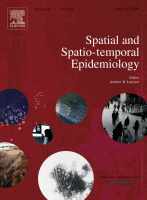
Quantifying geographic regions of excess stillbirth risk in the presence of spatial and spatio-temporal heterogeneity
Zahrieh, D., Oleson, J. J., & Romitti, P. A. (2019). Quantifying geographic regions of excess stillbirth risk in the presence of spatial and spatio-temporal heterogeneity. Spatial and spatio-temporal epidemiology, 29, 97–109.
Read the abstract
Motivated by population-based geocoded data for Iowa stillbirths and live births delivered during 2005-2011, we sought to identify spatio-temporal variation of stillbirth risk. Our high-quality data consisting of point locations of these delivery events allows use of a Bayesian Poisson point process approach to evaluate the spatial pattern of events. With this large epidemiologic dataset, we implemented the integrated nested Laplace approximation (INLA) to fit the conditional formulation of the point process via a Bayesian hierarchical model and empirically showed that INLA, compared to Markov chain Monte Carlo (MCMC) sampling, is an attractive approach. Furthermore, we modeled the temporal variability in stillbirth to better understand how stillbirths are geographically linked over the seven-year study period and demonstrate the similarity between the conditional formulation of the spatio-temporal model and a log Gaussian Cox process governed by discrete space-time random fields. After controlling for important features of the data, the Bayesian temporal relative risk maps identified areas of increasing and decreasing stillbirth risk over the birth period, which may warrant further public health investigation in the regions identified.
-

Prevalence and descriptive epidemiology of infantile hypertrophic pyloric stenosis in the United States: A multistate population-based, retrospective study, 1999-2010
Kapoor, R., Kancherla, V., Cao, Y., Oleson, J., Suhl, J., Canfield, M. A., Druschel, C. M., Kirby, R. S., Meyer, R. E., & Romitti, P. A. (2019). Prevalence and descriptive epidemiology of infantile hypertrophic pyloric stenosis in the United States: A multistate, population-based retrospective study, 1999-2010. Birth defects research, 111(3), 159–169.
Read the abstract
Background: Antecedents for infantile hypertrophic pyloric stenosis (IHPS) vary across studies; therefore, we conducted a multistate, population-based retrospective study of the prevalence and descriptive epidemiology of IHPS in the United States (US).
Methods: Data for IHPS cases (n = 29,554) delivered from 1999-2010 and enumerated from 11 US population-based birth defect surveillance programs, along with data for live births (n = 14,707,418) delivered within the same birth period and jurisdictions, were analyzed using Poisson regression to estimate IHPS prevalence per 10,000 live births. Additional data on deliveries from 1999-2005 from seven of these programs were analyzed using multivariable logistic regression to estimate adjusted prevalence ratios (aPR)s and 95% confidence intervals (CI)s for selected infant and parental characteristics.
Results: Overall, IHPS prevalence from 1999-2010 was 20.09 (95% CI = 19.87, 20.32) per 10,000 live births, with statistically significant increases from 2003-2006 and decreases from 2007-2010. Compared to their respective referents, aPRs were higher in magnitude for males, preterm births, and multiple births, but lower for birth weights <2,500 g. The aPRs for all cases increased with decreasing parental age, maternal education, and maternal parity, but decreased for parental race/ethnicity other than non-Hispanic White. Estimates restricted to isolated cases or stratified by infant sex were similar to those for all cases.
Conclusions: This study covers one of the largest samples and longest temporal period examined for IHPS in the US. Similar to findings reported in Europe, estimates suggest that IHPS prevalence has decreased recently in the US. Additional analyses supported associations with several infant and parental characteristics.
-

Bayesian point process modeling to quantify geographic regions of excess stillbirth risk
Zahrieh, D., Oleson, J.J. and Romitti, P.A. (2019), Bayesian Point Process Modeling to Quantify Geographic Regions of Excess Stillbirth Risk. Geogr Anal, 51: 381-400.
Read the abstract
Motivated by the paucity of high-quality stillbirth surveillance data and the spatial analysis of such data, we describe the pattern of stillbirth events as a step toward increased understanding of risk factors which can better guide future measures to mitigate these events. A challenge in such an analysis is that some mothers experience stillbirth events from independent pregnancies within a defined study period. To account for these dependencies, we parameterize our model to include a maternal contextual effect and broaden the appeal of Bayesian Poisson point process modeling to quantify excess stillbirth risk while considering a form of a log-Gaussian Cox process. In the presence of extra unobserved spatial variation in risk, we demonstrate a pragmatic methodologic strategy to model the risk surface in relation to covariates and that there is a variance-bias trade-off associated with the use of a maternal contextual effect. We applied our strategy to the spatial distribution of stillbirth in Iowa during the years 2005–2011 using data obtained from an active, statewide public health surveillance program. We identified areas of excess risk for further investigation based on model components that captured important features of the data.
-
A Population-Based Study of Effects of Genetic Loci on Orofacial Clefts
Moreno Uribe, L. M., Fomina, T., Munger, R. G., Romitti, P. A., Jenkins, M. M., Gjessing, H. K., Gjerdevik, M., Christensen, K., Wilcox, A. J., Murray, J. C., Lie, R. T., & Wehby, G. L. (2017). A Population-Based Study of Effects of Genetic Loci on Orofacial Clefts. Journal of dental research, 96(11), 1322–1329.
Read the abstract
Prior genome-wide association studies for oral clefts have focused on clinic-based samples with unclear generalizability. Prior samples were also small for investigating effects by cleft type and exclusively studied isolated clefts (those occurring without other birth defects). We estimated the effects of 17 top loci on cleft types in both isolated and nonisolated cases in the largest consortium to date of European-descent population-based studies. Our analytic approach focused on a mother-child dyad case-control design, but it also allowed analyzing mother-only or child-only genotypes to maximize power. Our total sample included 1,875 cases with isolated clefts, 459 cases with nonisolated clefts, and 3,749 controls. After correcting for multiple testing, we observed significant associations between fetal single-nucleotide polymorphisms (SNPs) at IRF6, PAX7, 8q21.3, 8q24, KIAA1598-VAX1, and MAFB and isolated cleft lip only (CLO) and cleft lip and palate (CLP). Significant associations were observed between isolated CLO and fetal SNPs near TPM1 and NOG1 and between CLP and fetal SNPs at ABCA4-ARHGAP29, THADA, FOXE1, and SPRY2. Overall, effects were similar for isolated CLO and CLP, except for ABCA4-ARHGAP29. A protective effect was observed for the fetal NOG1 SNP on cleft palate only, opposite in direction to the effect on CLO. For most fetal SNPs, a dose-response allelic effect was observed. No evidence of parent-of-origin or maternal genome effects was observed. Overall, effect direction and magnitude were similar between isolated and nonisolated clefts, suggesting that several loci are modifiers of cleft risk in both isolated and nonisolated forms. Our results provide reliable estimates of the effects of top loci on risks of oral clefts in a population of European descent.
-

Interaction between smoking and body mass index and risk of oral clefts
Wehby, G. L., Uribe, L. M., Wilcox, A. J., Christensen, K., Romitti, P. A., Munger, R. G., & Lie, R. T. (2017). Interaction between smoking and body mass index and risk of oral clefts. Annals of epidemiology, 27(2), 103–107.e2.
Read the abstract
Purpose: To examine maternal smoking and body mass index (BMI) interactions in contributing to risk of oral clefts.
Methods: We studied 4935 cases and 10,557 controls from six population-based studies and estimated a pooled logistic regression of individual-level data, controlling for study fixed effects and individual-level risk factors.
Results: We found a significant negative smoking-BMI interaction, with cleft risk with smoking generally declining with higher BMI. For all clefts combined, the odds ratio for smoking was 1.61 (95% confidence interval [CI]: 1.39-1.86) at BMI 17 (underweight), 1.47 (95% CI: 1.34-1.62) at BMI 22 (normal weight), 1.35 (95% CI: 1.22-1.48) at BMI 27 (overweight), 1.21 (95% CI: 1.04-1.41) at BMI 33 (obese), and 1.13 (95% CI: 0.92-1.38) at BMI 37 (very obese). A negative interaction was also observed for isolated clefts and across cleft types but was more pronounced for cleft lip only and cleft palate only.
Conclusions: Our findings suggest that the risk of oral clefts associated with maternal smoking is largest among underweight mothers, although the smoking-BMI interaction is strongest for cleft lip only and cleft palate only. BMI was not protective for the effects of smoking; a clinically relevant increase in smoking-related cleft risk was still present among heavier women.
-
Maternal underweight and obesity and risk of orofacial clefts in a large international consortium of population-based studies
Kutbi, H., Wehby, G. L., Moreno Uribe, L. M., Romitti, P. A., Carmichael, S., Shaw, G. M., Olshan, A. F., DeRoo, L., Rasmussen, S. A., Murray, J. C., Wilcox, A., Lie, R. T., & Munger, R. G. (2017). Maternal underweight and obesity and risk of orofacial clefts in a large international consortium of population-based studies. International journal of epidemiology, 46(1), 190–199.
Read the abstract
Background: Evidence on association of maternal pre-pregnancy weight with risk of orofacial clefts is inconsistent.
Methods: Six large case-control studies of orofacial clefts from Northern Europe and the USA were included in analyses pooling individual-level data. Cases included 4943 mothers of children with orofacial clefts (cleft lip only: 1135, cleft palate with cleft lip: 2081, cleft palate only: 1727) and controls included 10 592 mothers of unaffected children. Association of orofacial cleft risk with pre-pregnancy maternal weight classified by level of body mass index (BMI, kg/m 2 ) was evaluated using logistic regression adjusting for multiple covariates.
Results: Cleft palate, both alone and with cleft lip (CP+/-CL), was associated with maternal class II+ pre-pregnancy obesity (≥ 35)compared with normal weight [adjusted odds ratio (aOR) = 1.36; 95% confidence interval (CI) = 1.16, 1.58]. CP+/-CL was marginally associated with maternal underweight (aOR = 1.16; 95% CI = 0.98, 1.36). Cleft lip alone was not associated with BMI.
Conclusions: In this largest population-based study to date, we found an increased risk of cleft palate, with or without cleft lip, in class II+ obese mothers compared with normal-weight mothers; underweight mothers may also have an increased risk, but this requires further study. These results also suggest that extremes of weight may have a specific effect on palatal development.
-
Maternal alcohol binge-drinking in the first trimester and the risk of orofacial clefts in offspring: a large population-based pooling study
DeRoo, L. A., Wilcox, A. J., Lie, R. T., Romitti, P. A., Pedersen, D. A., Munger, R. G., Moreno Uribe, L. M., & Wehby, G. L. (2016). Maternal alcohol binge-drinking in the first trimester and the risk of orofacial clefts in offspring: a large population-based pooling study. European journal of epidemiology, 31(10), 1021–1034. https://doi.org/10.1007/s10654-016-0171-5
Read the abstract
Using individual participant data from six population-based case-control studies, we conducted pooled analyses to examine maternal alcohol consumption and the risk of clefts among >4600 infants with cleft lip only, cleft lip with cleft palate, or cleft palate only and >10,000 unaffected controls. We examined two first-trimester alcohol measures: average number of drinks/sitting and maximum number of drinks/sitting, with five studies contributing to each analysis. Study-specific odds ratios (ORs) were estimated using logistic regression and pooled to generate adjusted summary ORs. Across studies, 0.9-3.2 % of control mothers reported drinking an average of 5+ drinks/sitting, while 1.4-23.5 % reported drinking a maximum of 5+ drinks/sitting. Compared with non-drinkers, mothers who drank an average of 5+ drinks/sitting were more likely to deliver an infant with cleft lip only (pooled OR 1.48; 95 % confidence intervals 1.01, 2.18). The estimate was higher among women who drank at this level 3+ times (pooled OR 1.95; 1.23, 3.11). Ever drinking a maximum of 5+ drinks/sitting and non-binge drinking were not associated with cleft risk. Repeated heavy maternal alcohol consumption was associated with an increased risk of cleft lip only in offspring. There was little evidence of increased risk for other cleft types or alcohol measures.
-
Passive Smoke Exposure as a Risk Factor for Oral Clefts – A Large International Population-Based Study
Kummet, C. M., Moreno, L. M., Wilcox, A. J., Romitti, P. A., DeRoo, L. A., Munger, R. G., Lie, R. T., & Wehby, G. L. (2016). Passive Smoke Exposure as a Risk Factor for Oral Clefts-A Large International Population-Based Study. American journal of epidemiology, 183(9), 834–841.
Read the abstract
Maternal cigarette smoking is a well-established risk factor for oral clefts. Evidence is less clear for passive (secondhand) smoke exposure. We combined individual-level data from 4 population-based studies (the Norway Facial Clefts Study, 1996-2001; the Utah Child and Family Health Study, 1995-2004; the Norwegian Mother and Child Cohort Study, 1999-2009; and the National Birth Defects Prevention Study (United States), 1999-2007) to obtain 4,508 cleft cases and 9,626 controls. We categorized first-trimester passive and active smoke exposure. Multivariable logistic models adjusted for possible confounders (maternal alcohol consumption, use of folic acid supplements, age, body size, education, and employment, plus study fixed effects). Children whose mothers actively smoked had an increased risk of oral clefts (odds ratio (OR) = 1.27, 95% confidence interval (CI): 1.11, 1.46). Children of passively exposed nonsmoking mothers also had an increased risk (OR = 1.14, 95% CI: 1.02, 1.27). Cleft risk was further elevated among babies of smoking mothers who were exposed to passive smoke (OR = 1.51, 95% CI: 1.35, 1.70). Using a large pooled data set, we found a modest association between first-trimester passive smoking and oral clefts that was consistent across populations, diverse study designs, and cleft subtypes. While this association may reflect subtle confounding or bias, we cannot rule out the possibility that passive smoke exposure during pregnancy is teratogenic.
-

Children with oral clefts are at greater risk for persistent low achievement in school than classmates
Wehby, G. L., Collett, B. R., Barron, S., Romitti, P., & Ansley, T. (2015). Children with oral clefts are at greater risk for persistent low achievement in school than classmates. Archives of disease in childhood, 100(12), 1148–1154.
Read the abstract
Objectives: To examine trajectories in academic achievement for children with oral clefts versus unaffected classmates and explore predictors of persistently low achievement among children with oral clefts.
Design: Longitudinal cohort study of academic achievement in a population-based sample.
Setting and participants: Children born from 1983 through 2003 with oral clefts were identified from the Iowa Registry for Congenital and Inherited Disorders and matched to unaffected classmates by sex, school/school district and month and year of birth.
Main outcome measures: Academic achievement was measured from Iowa Testing Programs data. Outcomes included achievement scores in reading, language and mathematics.
Results: Academic achievement data were available for 586 children with oral clefts and 1873 unaffected classmates. Achievement trajectories were stable for both groups. Children with oral clefts were more likely than their classmates to be classified into persistent low achievement trajectories, including when adjusting for socioeconomic differences: OR=1.63, 95% CI 1.23 to 2.16 for reading; OR=1.73, 95% CI 1.29 to 2.31 for language; OR=1.45, 95% CI 1.05 to 1.99 for math. Predictors of low achievement were cleft palate only (vs other cleft types), adolescent mothers, low maternal education and less frequent use of prenatal care.
Conclusions: Most children have steady academic trajectories and children with oral clefts are at greater risk for persistent low achievement in school than unaffected classmates. These findings support the need for routine, early screening for academic deficits in this population. Cleft palate only, low parental education and adolescent mothers are associated with increased risk for persistent low achievement.
-
Stillbirth surveillance consortium
Romitti P. A. (2015). Stillbirth surveillance consortium. BMC Pregnancy and Childbirth, 15(Suppl 1), A8.
Read the abstract
Stillbirths have an estimated prevalence of 6 per 1,000 live births and fetal deaths combined in the United States (U.S.), yet major risk factors for these adverse birth outcomes remain elusive [1,2]. Historically in the U.S., surveillance information about stillbirth has come from fetal death certificates maintained by the National Vital Statistics System.
Data collection within the National Vital Statistics System is guided by the Model State Vital Statistics Act and Regulations (Model Law), which defines fetal loss as showing no signs of breath or cardiac activity after expulsion [3]. The Model Law also recommends reporting a fetal loss as a stillbirth if the fetus weighs 350 grams or greater, or if no birth weight is available, the fetus is at least 20 weeks in gestational age.
Each state in the U.S. develops its own definition, reporting criteria, and fetal death certificate, which can produce variability in reporting across states [4]. Additionally, previous studies suggest that fetal death certificate data are limited in utility as a source for national stillbirth surveillance due to under- or over-reporting and the completeness and quality of recorded data [5].
An alternative approach to surveillance of stillbirths is the use of established birth defect surveillance systems to incorporate active case finding for stillbirths. This approach permits population-based identification of affected pregnancies and characterization of the epidemiology of these pregnancies. In 2005, the Centers for Disease Control and Prevention established projects for stillbirth surveillance using the established infrastructures of the Metropolitan Atlanta Congenital Defects Program and the Iowa Registry for Congenital and Inherited Disorders, two premier birth defect surveillance systems in the U.S.
The goals of our Iowa project, the Iowa Stillbirth Surveillance Project (ISSP), were to: evaluate the feasibility of expanding the Iowa Registry for Congenital and Inherited Disorders to incorporate data from existing records on stillbirths; monitor and report, as feasible, on the occurrence of stillbirths in the state of Iowa; serve as a registry for etiologic studies of stillbirths; and serve as a resource for education and evaluation of prevention programs that aim to reduce the occurrence of stillbirths .
Active case finding and record abstraction approaches, originally developed for birth defect surveillance in Iowa, were used by the ISSP for state-wide ascertainment of stillbirths. We ascertained 1,301 reportable stillbirths (≥20 weeks gestation or ≥350 grams delivery weight) delivered from January 1, 2005 through December 31, 2011. Surveillance data collected are being used to estimate population-based prevalence estimates for stillbirths in Iowa and to examine fetal and parental characteristics associated with stillbirths. Also, these data are being used to conduct individual-level geospatial surveillance of stillbirths. Knowledge of the spatial patterns of stillbirths may provide important insights into possible links to environmental exposures and the opportunity to plan detailed etiological investigations.
We continue to monitor stillbirths among the approximately 40,000 deliveries in Iowa annually. In 2012, we also expanded active case finding and record abstraction for stillbirths to include birth defect surveillance systems in Colorado, Hawaii, and New York State. This Stillbirth Surveillance Consortium (SSC) uses similar surveillance methods and tools to provide a systematic approach to population-based surveillance of stillbirths and covers more than 120,000 deliveries annually with a diverse racial/ethnic composition. To date, the SSC has ascertained 784 reportable stillbirths delivered from January 1, 2010 through December 31, 2011. Surveillance data collected by the SSC will expand ongoing analyses by the ISSP for prevalence estimation, examination of fetal and parental characteristics, and individual-level geospatial surveillance. The methods developed by the SSC can serve as a model for other states to expand birth defect surveillance programs to include active case finding and record abstraction for stillbirths.
-

Academic achievement in children with oral clefts versus unaffected siblings
Collett, B. R., Wehby, G. L., Barron, S., Romitti, P. A., Ansley, T. N., & Speltz, M. L. (2014). Academic achievement in children with oral clefts versus unaffected siblings. Journal of pediatric psychology, 39(7), 743–751. https://doi.org/10.1093/jpepsy/jsu049
Read the abstract
Objective: To compare academic achievement in children with oral-facial clefts (OFC) with their unaffected siblings.
Methods: 256 children with OFC were identified from the Iowa Registry for Congenital and Inherited Disorders, and 387 unaffected siblings were identified from birth certificates. These data were linked to Iowa Testing Programs achievement data. We compared academic achievement in children with OFC with their unaffected siblings using linear regression models, adjusted for potential confounders. In post hoc analyses, we explored modifiers of siblings’ academic performance.
Results: Achievement scores were similar between children with OFC and their siblings. Children with cleft palate only were significantly more likely to use special education than their unaffected siblings. Siblings’ academic achievement was inversely related to distance in birth order and age from the affected child.
Conclusion: Children with OFC and their siblings received similar achievement scores. Younger siblings, in particular, may share a vulnerability to poor academic outcomes.
-

Examination of mental health status and aggravation level among mothers of children with isolated oral clefts
Dabit, J. Y., Romitti, P. A., Makelarski, J. A., Tyler, M. C., Damiano, P. C., Druschel, C. M., Robbins, J. M., Caspers, K. M., & Burnett, W. B. (2014). Examination of mental health status and aggravation level among mothers of children with isolated oral clefts. The Cleft palate-craniofacial journal : official publication of the American Cleft Palate-Craniofacial Association, 51(4), e80–e87.
Read the abstract
Objective: To examine self-reported mental health status and aggravation level in mothers of children with isolated oral clefts.
Methods: Population-based sample of children (aged 4 to 9 years) with isolated oral clefts was enumerated from births from 1998 through 2003 in Arkansas, Iowa, and New York State. Mothers of 294 children completed the Mental Health Inventory 5-item questionnaire and Aggravation in Parenting Scale. The Mental Health Inventory and Aggravation in Parenting Scale scores, stratified by poor (Mental Health Inventory ≤ 67) and better (Mental Health Inventory > 67) mental health status or high (Aggravation in Parenting Scale ≤ 11), moderate (Aggravation in Parenting Scale = 12 to 15) and low (Aggravation in Parenting Scale = 16) aggravation, were compared by selected maternal and child characteristics. Mean scores for each instrument and proportion of mothers with poor mental health or high aggravation were compared with those reported in the National Survey of American Families.
Results: Mean scores for each instrument and proportion of mothers with poor mental health or high aggravation differed little from published data. Mothers with poor mental health tended to be less educated, to have lower household incomes, and to rate their health and their child’s health lower than those in better mental health. Mothers with high aggravation tended to have lower household incomes, to have more children, and to rate their health and their child’s health lower than those with moderate or low aggravation.
Conclusions: Mothers of affected children were not more likely to experience poor mental health or high aggravation compared with published data; however, sociodemographic characteristics were associated with maternal psychosocial adaptation. Brief screeners for mental health and parenting administered during routine appointments may facilitate identifying at-risk caregivers.
-
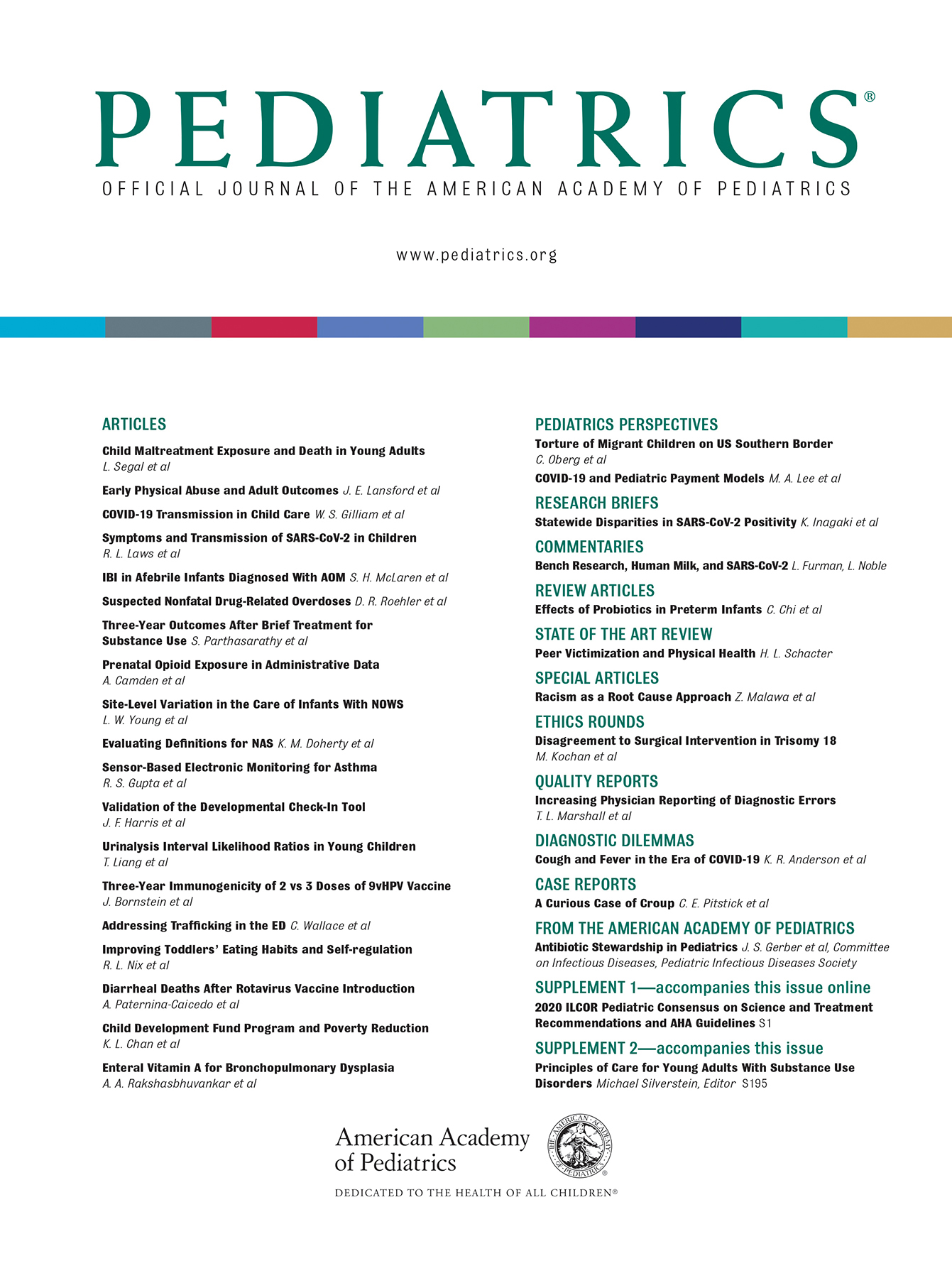
Academic achievement of children and adolescents with oral clefts
Wehby, G. L., Collet, B., Barron, S., Romitti, P. A., Ansley, T. N., & Speltz, M. (2014). Academic achievement of children and adolescents with oral clefts. Pediatrics, 133(5), 785–792.
Read the abstract
Background and objective: Previous studies of academic achievement of children with oral clefts have mostly relied on small, clinic-based samples prone to ascertainment bias. In the first study in the United States to use a population-based sample with direct assessment, we evaluated the academic achievement of children with oral clefts relative to their classmates.
Methods: Children born with isolated oral clefts in Iowa from 1983 to 2003 were identified from the Iowa Registry for Congenital and Inherited Disorders and matched to unaffected classmates by gender, school/school district, and month and year of birth. Academic achievement was assessed by using standardized tests of academic progress developed by the Iowa Testing Programs. Iowa Testing Programs data were linked to birth certificates for all children. Regression models controlled for household demographic and socioeconomic factors. The analytical sample included 588 children with clefts contributing 3735 child-grade observations and 1874 classmates contributing 13 159 child-grade observations.
Results: Children with oral clefts had lower scores than their classmates across all domains and school levels, with a 5-percentile difference in the overall composite score. Children with clefts were approximately one-half grade level behind their classmates and had higher rates of academic underachievement and use of special education services by 8 percentage points. Group differences were slightly lower but remained large and significant after adjusting for many background characteristics.
Conclusions: Children with oral clefts underperformed across all academic areas and grade levels compared with their classmates. The results support a model of early testing and intervention among affected children to identify and reduce academic deficits.
-
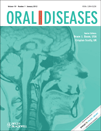
Oral clefts and behavioral health of young children
Wehby, G. L., Tyler, M. C., Lindgren, S., Romitti, P., Robbins, J., & Damiano, P. (2012). Oral clefts and behavioral health of young children. Oral diseases, 18(1), 74–84.09.
Read the abstract
Objectives: This study examined the behavioral health of young children with oral clefts, and effects of satisfaction with facial appearance, cleft team care, number of cleft-related surgeries, and socioeconomic status (SES).
Subjects and methods: The study included a population-based sample of 104 children aged 2-12 years with isolated oral clefts from the state of Iowa. Behavior was evaluated with the Child Behavior Checklist or the Pediatric Behavior Scale 30, depending on age, compared with normative samples.
Results: Risks of behavioral problems were not significantly different from normative samples except for higher inattention/hyperactivity risks at age 6-12 years. Low satisfaction with facial appearance was associated with behavioral problems in all domains, except aggression. Team-care effects were not associated with behavioral problems. Number of cleft-related surgeries was associated with increased anxiety/depression and somatic symptom risks. Higher SES was associated with reduced inattention/hyperactivity, aggressive/oppositional behavior, and somatic symptoms.
Conclusions: Most children with oral clefts may have similar behavioral health outcomes to unaffected children, except for increased inattention/hyperactivity risks at older ages. However, low satisfaction with facial appearance, increased exposure to surgeries, and lower SES may significantly increase behavioral problems. Also, the findings emphasize the need to study the representation of behavioral health professionals on cleft teams and access to behavioral health care.
-

Use of active surveillance methodologies to examine over-reporting of stillbirths on fetal death certificates
Makelarski, J. A., Romitti, P. A., Caspers, K. M., Puzhankara, S., McDowell, B. D., & Piper, K. N. (2011). Use of active surveillance methodologies to examine over-reporting of stillbirths on fetal death certificates. Birth defects research. Part A, Clinical and molecular teratology, 91(12), 1004–1010.
Read the abstract
Background: Data from Iowa fetal death certificates (FDCs) suggest that reportable stillbirths (unintended fetal deaths ≥ 20 weeks gestation and/or weighing ≥ 350 grams) occur in about 1 in 200 deliveries. In 2005, the Iowa Department of Public Health and the Iowa Registry for Congenital and Inherited Disorders (IRCID) collaborated with other state stakeholders to establish the Iowa Stillbirth Surveillance Project. The goal of this project was to use population-based, active surveillance methodologies to identify reportable stillbirths delivered by Iowa residents since January 1, 2000.
Methods: To conduct stillbirth surveillance, the IRCID expanded its existing public health authority and electronic abstract application for birth defects surveillance. The expanded application was piloted using a random sample (n = 250 of 989) of FDCs reported from January 2000 through December 2004.
Results: IRCID procedures for active case finding and medical record abstraction verified 192 (76.8%) as reportable stillbirths. Stillbirths not verified as reportable were due to findings of elective terminations (n = 30), live births (n = 3), induced deliveries (n = 2), and FDC entries for gestational age and/or delivery weight that were either inaccurately recorded (n = 13) or accurately recorded but did not meet Iowa FDC reporting criteria (n = 9); medical records for one FDC were unavailable. Infant malformations were more common among unverified stillbirths, whereas the cause of death due to maternal-related conditions was higher among verified stillbirths.
Conclusions: These results suggest that over-reporting limits the use of FDCs as a primary ascertainment source for stillbirth surveillance in Iowa. Continued expansion of the IRCID active surveillance methodologies to monitor stillbirths in Iowa is recommended.
-
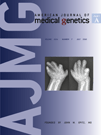
Epidemiology of congenital idiopathic talipes equinovarus in Iowa, 1997-2005
Kancherla, V., Romitti, P. A., Caspers, K. M., Puzhankara, S., & Morcuende, J. A. (2010). Epidemiology of congenital idiopathic talipes equinovarus in Iowa, 1997-2005. American journal of medical genetics. Part A, 152A(7), 1695–1700.
Read the abstract
Congenital idiopathic talipes equinovarus (ITEV), also known as clubfoot, is a well-recognized foot deformity. To date, prevalence estimates and descriptive data reported for ITEV have varied due to differences in study methodology. Using population-based surveillance data collected by the Iowa Registry for Congenital and Inherited Disorders, we examined isolated ITEV births delivered from 1997 through 2005 and compared to live births in Iowa during the same time period. An overall prevalence was calculated for live, singleton full-term births only. Prevalence odds ratios (POR)s and 95% confidence intervals (CI)s were examined for selected infant and parental characteristics. The prevalence of isolated ITEV was 11.4 per 10,000 live, singleton full-term births (95% CI = 10.3, 12.6), with no significant variation in prevalence during the study period. Increased PORs were found for males (POR 1.8; 95% CI = 1.5, 2.3) and maternal smoking during pregnancy (POR = 1.5, 95% CI = 1.2, 1.9); low birth weight (<2,500 g) showed an increase among females (POR = 3.2, 95% CI = 1.5, 6.9) but not males (POR = 0.9, 95% CI = 0.3, 2.8). Elevated, but non-significant, PORs were found for season of birth, maternal education, and trimester prenatal care was initiated; decreased PORs were found for fetal presentation, maternal race/ethnicity, parity, area of residence, and parental age at delivery. Our study of a well-defined, homogenous sample suggested that prevalence of isolated ITEV in Iowa was similar to that reported in other population-based studies and provided support for some, but not all, previously reported associations with infant and parental characteristics. More detailed, longitudinal studies of isolated ITEV are recommended.
-
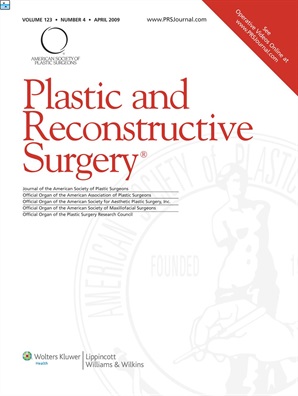
Maternal reports of satisfaction with care and outcomes for children with microtia
Kancherla, V., Romitti, P. A., Damiano, P. C., Druschel, C. M., & Robbins, J. M. (2009). Maternal reports of satisfaction with care and outcomes for children with microtia. Plastic and reconstructive surgery, 123(4), 149e–150e.
Read the abstract
In summary, mothers of children with microtia were generally satisfied with the care provided, although a need for increased access to an organized specialty care team, improved interactions with healthcare professionals, and a lack of hearing aids were identified. Despite the modest number of participants, our study is the first population-based assessment to measure the baseline needs among parents of children with microtia. Continued follow-up of this sample might provide additional insights into postoperative care and outcomes experienced by these children.
-
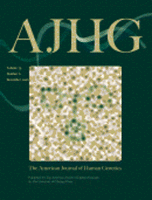
Orofacial cleft risk is increased with maternal smoking and specific detoxification-gene variants
Shi, M., Christensen, K., Weinberg, C. R., Romitti, P., Bathum, L., Lozada, A., Morris, R. W., Lovett, M., & Murray, J. C. (2007). Orofacial cleft risk is increased with maternal smoking and specific detoxification-gene variants. American journal of human genetics, 80(1), 76–90.
Read the abstract
Maternal smoking is a recognized risk factor for orofacial clefts. Maternal or fetal pharmacogenetic variants are plausible modulators of this risk. In this work, we studied 5,427 DNA samples, including 1,244 from subjects in Denmark and Iowa with facial clefting and 4,183 from parents, siblings, or unrelated population controls. We examined 25 single-nucleotide polymorphisms in 16 genes in pathways for detoxification of components of cigarette smoke, to look for evidence of gene-environment interactions. For genes identified as related to oral clefting, we studied gene-expression profiles in fetal development in the relevant tissues and time intervals. Maternal smoking was a significant risk factor for clefting and showed dosage effects, in both the Danish and Iowan data. Suggestive effects of variants in the fetal NAT2 and CYP1A1 genes were observed in both the Iowan and the Danish participants. In an expanded case set, NAT2 continued to show significant overtransmission of an allele to the fetus, with a final P value of .00003. There was an interaction between maternal smoking and fetal inheritance of a GSTT1-null deletion, seen in both the Danish (P=.03) and Iowan (P=.002) studies, with a Fisher’s combined P value of <.001, which remained significant after correction for multiple comparisons. Gene-expression analysis demonstrated expression of GSTT1 in human embryonic craniofacial tissues during the relevant developmental interval. This study benefited from two large samples, involving independent populations, that provided substantial power and a framework for future studies that could identify a susceptible population for preventive health care.
-
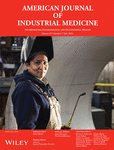
Evaluation of reports of periconceptual occupational exposure: Maternal-assessed versus industrial hygienist-assessed exposure
Bauer, E. P., Romitti, P. A., & Reynolds, S. J. (1999). Evaluation of reports of periconceptual occupational exposure: maternal-assessed versus industrial hygienist-assessed exposure. American journal of industrial medicine, 36(5), 573–578.
Read the abstract
Background: While the number of women entering the work force has grown, so has the importance of investigating occupational reproductive hazards. The objective of this study was to examine the concordance between maternal-assessed and industrial hygienist-assessed exposure to four classes of occupational agents – video display terminals, paints, solvents, and agricultural chemicals.
Methods: Case (n=87) and control (n=102) mothers who participated in a population-based study of orofacial clefts provided occupational histories and exposure (yes/no) to selected classes of agents for the one-year period prior to their child’s delivery. Two industrial hygienists reviewed the occupational histories and assigned mothers an exposure status for each class of agent. Using industrial hygienist-assessed exposure as the “gold standard”, sensitivity and specificity of maternal reports were calculated for each class of agent. Kappa statistics were calculated for the study population to account for chance agreement between the two exposure assessment methods.
Results: Sensitivity estimates for cases were the highest for video display terminals (77%) and lowest for agricultural chemicals (14%). Respective estimates for controls were 74% and 14%. Specificity estimates tended to be high for both groups. Kappa values ranged from 0.16-0.45.
Conclusions: With regard to the classes of agents examined, these data suggest screening questions alone may not be the preferred method of obtaining occupational exposure histories, even when the time period of interest is fairly short and recent.
-
Candidate genes for nonsyndromic cleft lip and palate and maternal cigarette smoking and alcohol consumption: Evaluation of genotype-environment interactions from a population-based case-control study of orofacial cleft
Romitti, P. A., Lidral, A. C., Munger, R. G., Daack-Hirsch, S., Burns, T. L., & Murray, J. C. (1999). Candidate genes for nonsyndromic cleft lip and palate and maternal cigarette smoking and alcohol consumption: evaluation of genotype-environment interactions from a population-based case-control study of orofacial clefts. Teratology, 59(1), 39–50.
Read the abstract
Previous studies suggest that the relationship between genes and nonsyndromic cleft lip +/- cleft palate (CLP) or cleft palate only (CP) may be modified by the environment. Using data from a population-based case-control study, we examined allelic variants for three genes, i.e., transforming growth factor alpha (TGFA), transforming growth factor beta 3 (TGFB3), and Msh (Drosophila) homeobox homolog 1 (MSX1), and their interactions with two exposures during pregnancy (maternal cigarette smoking and alcohol consumption) as risk factors for CLP and CP. For each cleft phenotype, risk estimates associated with most allelic variants tended to be near unity. Risk estimates for maternal smoking (> or = 10 cigarettes/day) were significantly elevated for CP and were most elevated among infants with allelic variants at the TGFB3 or MSX1 sites. By comparison, risk estimates for maternal alcohol consumption (> or = 4 drinks/month) were significantly elevated for CLP and were most elevated among infants with allelic variants at the MSX1 site. Our results suggest that development of CLP and CP may be influenced independently by maternal exposures but more significantly by interaction of such exposures and specific allelic variants.
-
The effect of follow-up on limiting non-participation bias in genetic epidemiologic investigations
Romitti, P. A., Munger, R. G., Murray, J. C., Daack-Hirsch, S., Hanson, J. W., & Burns, T. L. (1998). The effect of follow-up on limiting non-participation bias in genetic epidemiologic investigations. European journal of epidemiology, 14(2), 129–138.
Read the abstract
The use of a comprehensive follow-up strategy to limit non-participation bias was evaluated in a population-based case-control study of orofacial clefts. Birth parents were requested to provide exposure data, and index children and parents were asked to provide blood specimens. Follow-up included telephone or postal reminders every two weeks for up to three months. Consent to participate was received from 281 (76.6%) case mothers and 246 (72.4%) case fathers. The corresponding totals for controls were 279 (54.7%) and 245 (49.8%). Evaluation of participation rates by intensity of follow-up showed that 23% of case and 18% of control families consented without reminders (first stage); 81% of cases and 83% of controls agreed following one or two reminders (second stage); and the remainder of participants consented following three or more reminders (final stage). Cumulative distributions of sociodemographic characteristics differed little between second and final stage participants. Odds ratios for maternal multivitamin use were similar between second and final stage participants, whereas those for maternal and paternal smoking tended to decline. Although follow-up measures were necessary to enroll most families, use of more than two reminders did not appear to increase the representativeness of the sample; however, termination of recruitment after only two reminders would have led to different conclusions. Future studies require data collection protocols that encourage participation from all population subgroups, and one alternative is presented.
-
Maternal interview reports of family history of birth defects: evaluation from a population-based case-control study of orofacial clefts
Romitti, P. A., Burns, T. L., & Murray, J. C. (1997). Maternal interview reports of family history of birth defects: evaluation from a population-based case-control study of orofacial clefts. American journal of medical genetics, 72(4), 422–429.
Read the abstract
Accurate family histories of birth defects are critical for risk assessment and etiologic investigations. Typically, information about family history of birth defects is ascertained from interviews with birth mothers of index children; however, the quality of these interviews is rarely assessed. We evaluated family history information provided by case (n = 28) and control (n = 29) mothers who participated in a population-based, case-control study of orofacial clefts. Interview responses from mothers were compared to questionnaire reports collected by mail from first- and second-degree parental relatives. A total of 345 case and 380 control adult relatives completed questionnaires. These relatives also provided reports for 130 case and 169 control offspring. To examine the quality of birth defect reports, the sensitivity and specificity of birth mother responses were calculated. Sensitivity for presence (yes/no) of a birth defect was 31% for case mothers and 9% for control mothers. Specificity for case and control mothers was 98% and 97%, respectively. Interview responses from mothers who participate in family genealogy were more likely to be concordant with relative reports than were responses from mothers who do not participate in family genealogy. Case mother responses were more likely to be concordant than control mother responses. These results suggest that reliance on interview reports from birth mothers may lead to an underestimation of the occurrence of birth defects in relatives. Future investigations should explore methods to improve the quality of informant reports about family histories of birth defects. One alternative approach is discussed.
-
Feasability of collecting disease reports from relatives for genetic epidemiologic investigations
Romitti, P. A., & Burns, T. L. (1997). Feasibility of collecting disease reports from relatives for genetic epidemiologic investigations. Human heredity, 47(6), 351–357.
Read the abstract
Self-reports of disease from relatives are generally believed to be more detailed than those received from a family informant, although differential participation may exist among the relatives who provide information. To investigate the potential for differential participation, we requested permission to contact relatives of mothers (informants) who had provided family history information for a population-based case-control study of orofacial clefts. Birth defect and cancer self-reports were received from 345 (65.6%) case and 380 (68.8%) control relatives. Participants and nonparticipants differed little by type (maternal or paternal) or degree of relationship. Informants, however, were more likely to permit contact with relatives who were maternal, first-degree and female. Relatives appeared willing to provide self-reports, although the potential for differential selection introduced by informants should be considered.
-
Maternal alcohol use and risk of orofacial cleft birth defects
Munger, R. G., Romitti, P. A., Daack-Hirsch, S., Burns, T. L., Murray, J. C., & Hanson, J. (1996). Maternal alcohol use and risk of orofacial cleft birth defects. Teratology, 54(1), 27–33.
Read the abstract
Maternal alcohol use during pregnancy is a known cause of birth defects associated with the fetal alcohol syndrome, but its role in more common, isolated, craniofacial birth defects is not well understood. A population-based, case-control study of orofacial clefts was conducted in Iowa using births during 1987-1991. Cases were identified by the Iowa Birth Defects Registry and classified as having a cleft lip with or without cleft palate (CLP) or cleft palate only (CP) and whether the cleft was isolated or occurred with other birth defects. Controls were selected from normal Iowa births. Maternal alcohol use during pregnancy was classified according to self-reported drinks consumed per month. Results are based on 302 controls and the following numbers in each case group: 118 isolated CLP, 56 isolated CP, 51 CLP with multiple defects, and 62 CP with multiple defects. Compared to women who did not drink alcohol during pregnancy, the relative odds of isolated CLP rose with increasing level of maternal drinking as follows: 1-3 drinks per months, 1.5; 4-10 drinks per month, 3.1; more than 10 drinks per month, 4.7 (chi-square test for trend, P = 0.003). Adjustment for maternal smoking, vitamin use, education, and household income did not substantially alter these results. No significant association was found between alcohol use and isolated cleft palate or clefts in children with multiple birth defects. Alcohol use during pregnancy may be a cause of isolated cleft lip with or without cleft palate.
